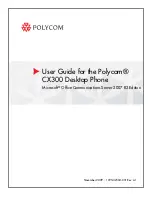
For Your Safety
74
Fo
r Y
ou
r S
afe
ty
transmitter and receiver. When it
is ON, it receives and also sends
out radio frequency (RF) signals.
In August, 1996 , the Federal
Communications Commissions
(FCC) adopted RF exposure
guidelines with safety levels for
handheld wireless phones. Those
guidelines are consistent with the
safety standards previously set by
both U.S. and international
standards bodies:
ANSI C95 .1 (1992 ) *
NCRP Report 86 (1986)
ICNIRP (1996 )
Those standards were based on
comprehensive and periodic
evaluations of the relevant
scientific literature. For example,
over 120 scientists, engineers,
and physicians from universities,
government health agencies, and
industry reviewed the available
body of research to develop the
ANSI Standard (C95 .1).
* American National Standards
Institute; National Council on
Radiation Protection and
Measurements; International
Commission on Non-Ionizing
Radiation Protection The design
of your phone complies with the
FCC guidelines (and those
standards).
Antenna Care
Use only the supplied or an
approved replacement antenna.
Unauthorized antennas,
modifications, or attachments
could damage the phone and
may violate FCC regulations.
Phone Operation
NORMAL POSITION:
Hold the
phone as you would any other
telephone with the antenna
pointed up and over your
shoulder.
Tips on Efficient Operation
For your phone to operate most
efficiently:
Summary of Contents for 505C
Page 1: ...USER GUIDE USER GUIDE P NO MFL67280901 1 0 Printed in China H LG505C LG505C ...
Page 107: ...MEMO ...
Page 108: ...MEMO ...
Page 109: ...MEMO ...
















































